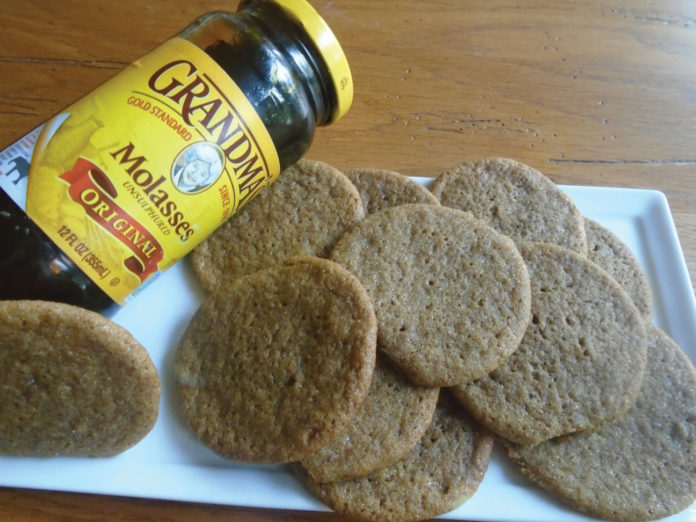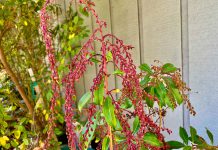While pouring the dark, thick and very sticky molasses from its bottle this morning, I thought about the people who drowned during the Great Boston Molasses Flood of 1919, one hundred and five years ago.
On the docks of Boston Harbor, Purity Distilling company had a 50 ft. x 90 ft. tank holding 2.3 million gallons of molasses, its temperature registering 40deg F. Earlier that day a ship off-loaded molasses that had been heated to increase the flow of this thick syrup into the tanks. This warm to cold process resulted in the thermal expansion inside the tank, resulting in the tank blowing apart.
Instantly, a wall of molasses 25 ft. high rushed through Commercial Street, taking everything and everyone in its wake. Twenty-one people died as a result and 150 were injured.
It took months to clean up this mess. It was reported by papers that everything Bostonians touched was sticky.
To produce molasses, sugar cane is harvested and stripped of its leaves. Its juice is extracted by cutting, crushing or mashing. The juice is boiled to produce a concentrate and encourage crystallization.
The first boiling is called first syrup or cane syrup. The second boiling produces molasses that we use in cooking, and the third boiling yields a dark viscous blackstrap molasses, used mainly in cattle feed or to produce ethanol, or in fertilizer. Blackstrap is intensely bitter and should be used with caution.
Only use this molasses in recipes that “specifically” call for it.
Sugarcane molasses is usually used to flavor and sweeten foods, such as brown sugars and in brewing beer. Both molasses and sugar cane molasses can be used interchangeably.
Oftentimes I find I am out of molasses, but quickly remedy the issue by adding 1 Tbsp. of molasses to 1 cup of granulated sugar for light brown sugar, and if a darker sugar is needed, I add more molasses until I reach the right color and flavor. This method simply requires lots of stirring until it is well mixed.
Sugar beet molasses is mainly used as an animal feed additive.
Pomegranate molasses is a traditional ingredient in Middle Eastern cooking. It is made by simmering a mixture of pomegranate juice, sugar and lemon juice and reducing the mixture for about an hour until the consistency of the syrup is achieved.
Sorghum syrup (sometimes called molasses) is refined from the stalks of the sorghum plant. It has a slightly sour but sweet flavor. Often used in commercial baking to reduce costs. Sorghum grains can be used instead of rice or quinoa. Simply cook like pasta.
Unsulfured molasses. Many types of molasses on the market are branded unsulfured. In the past, many foods, including molasses were treated with a “sulfur dioxide” preservative, helping to kill off molds and bacteria. Sulfur dioxide is also used as a bleaching agent to help lighten the color of molasses. Most brands have abandoned the use of sulfur dioxide in molasses because untreated molasses already give a relatively stable natural shelf life. Poor flavor and the trace of toxicity of low doses of sulfur dioxide are also factors that have led to its removal.
Molasses is composed of 22% water, 75% carbohydrates and very small amounts of fat (0.1%). It contains no protein. Molasses is a rich source of vitamin B6 and several dietary minerals, including manganese, magnesium, iron, potassium and calcium.
The sugars in molasses are on average (39% of total carbohydrates), glucose 16% and fructose 17%. This data is from the USDA nutrition table.
Today, you will find molasses in rye breads, barbecue sauces, gingerbread, corn and maple syrups, cookies, beers and the distillation of rum.
This morning as I was turning my calendar to the month of October and that we were well into the fall season, I thought of my aunt’s Gingersnap cookies and how the seniors would love them for their Soup and Salad luncheon at the Scotts Valley Senior Center next week.
I use fresh ground jarred ginger that I purchase at Safeway in their produce department next to the ground garlic in jars. Be careful to look at the label as they look similar. I also keep a small jar of McCormick’s dry ground ginger on hand just in case.
Welcome Fall!
Gingersnap Cookies
Makes 24
3/4 cup butter, room temperature
1/2 cup brown sugar, lightly packed
1/2 cup gran. sugar
In a mixer, beat together until light and fluffy
Add to butter mixture and mix well:
2 eggs
1/4 cup molasses
2 tsp. ground ginger
In a bowl sift together:
2 cups all-purpose flour
1 1/2 tsp baking soda
1 tsp. cinnamon
1/2 tsp. cloves
1 tsp. salt
Add to wet ingredients and mix well.
Chill at least two hours.
Roll mixture into 1 in. balls and roll in a bowl of gran, sugar. And place 2 in. apart.
Bake in a 325deg. oven for 12 min.
Colly Gruczelak, a Ben Lomond resident, loves people and loves to cook. Contact her at cz****@*****st.net.













